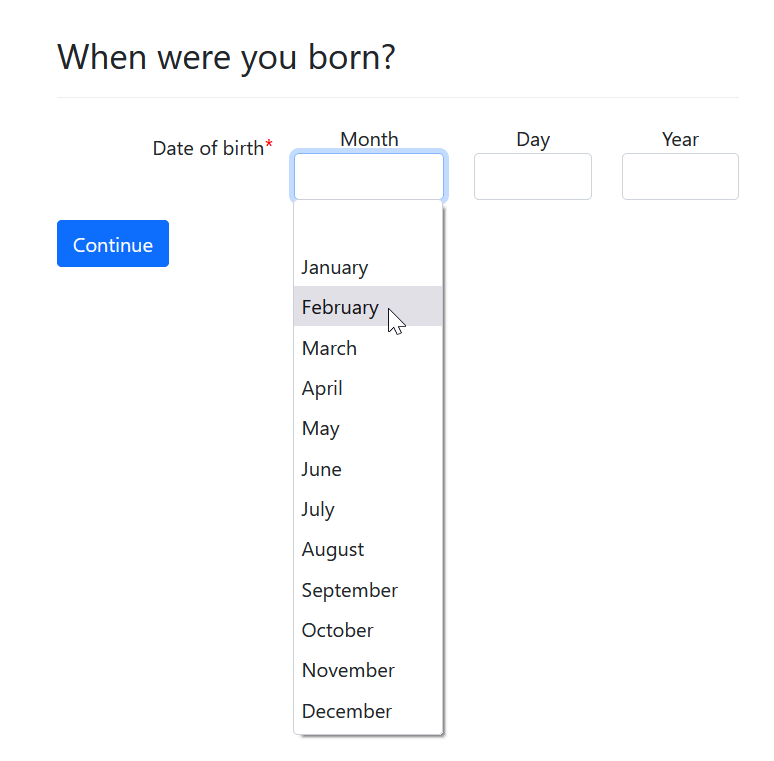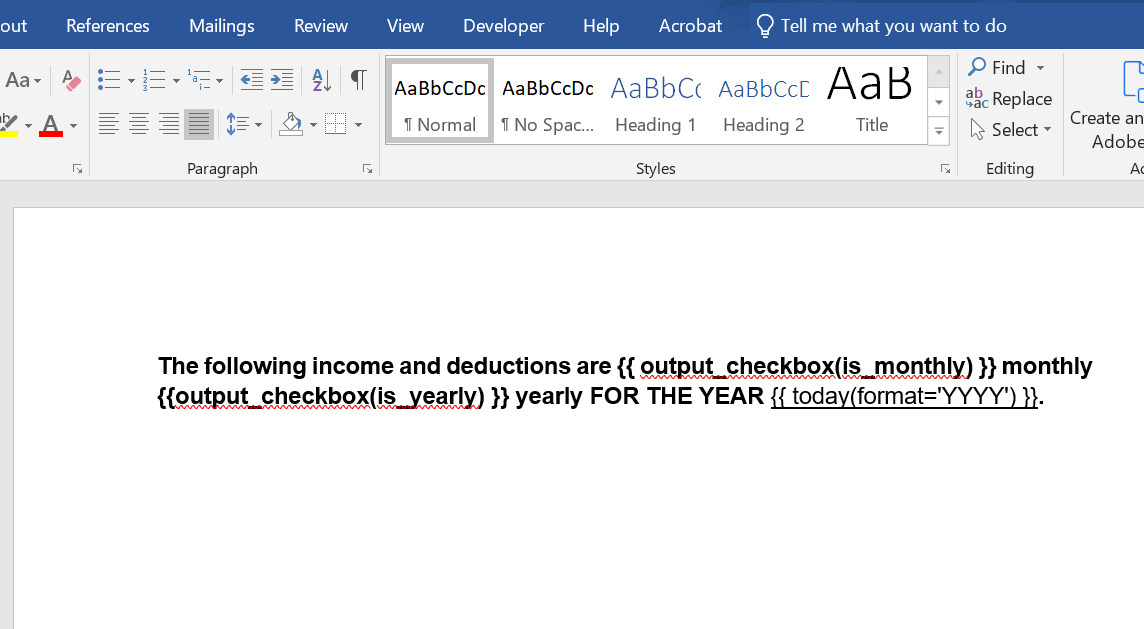ALToolbox functions and components
The functions and classes listed on this page can be used without the Assembly Line framework. Follow the instructions to include each component in your interview, which may involve including a single YAML file or a module, CSS, and JavaScript file.
The ALToolbox repo is constantly expanded to add new functions. As this page provides only some samples, you can see more in the "Live demos" section below. You can also see more details about each individual function in the ALToolbox API reference for each module:
Live demos
To get a hands-on experience on any of these functions, you can go to ALToolbox's overview page to run the demo interview you are interested in.
The overview page also provides instructions for those who want to contribute to ALToolbox.
Collapsible help text
Use collapse_template() to display an accordion-style information box that
starts out hidden but expands when the user clicks on it. The contents of the
information box come from a Docassemble template
block. The subject will
display with an arrow, and the content of the template will be shown when the
subject is clicked on.
We recommend using this for help text in your interviews.
It works a lot like this details element:
Like this
Context-specific help goes here.
To include this in your interview:
---
include:
- docassemble.ALToolbox:collapse_template.yml
Example usage:
---
id: example question
question: |
What is your favorite fruit?
subquestion: |
${ collapse_template(fruit_explanation) }
---
template: fruit_explanation
subject: |
Like this
content: |
Context-specific help goes here.
API for collapse_template, and Code for collapse_template
Display markdown template with a scroll bar
display_template() displays a Docassemble
template with a scroll bar to save screen space if the content is long.
It also displays the subject line along with the content, and allows you to add styles to the display. You can turn the scroll bar on and off.
Example: display_template(my_template, scrollable=True, class_name="my_color").
Include this in your interview:
---
include:
- docassemble.ALToolbox.display_template.yml
Display a series of tabs
tabbed_templates_html() displays a series of Docassemble
templates with Bootstrap
tabs.
Example: tabbed_templates_html('unique_name_of_tab_group', tab_template1, tab_template2).
Include this in your interview:
---
modules:
- docassemble.ALToolbox.misc
Format telephone numbers as clickable links
This tel function just makes a string representing a telephone number
clickable, which opens the dialer on mobile.
For example: tel('617-555-5555')
Include this in your interview:
---
modules:
- docassemble.ALToolbox.misc
Total a list of values that may not be defined
sum_if_defined() returns the total of a list of values that may or may not be
defined. Each variable's name should be passed as a string as a separate
parameter.
Use it like this:
sum_if_defined('value1', 'value2', 'value3'). Using sum_if_defined() will
not error if any of the values are undefined. If no value is defined,
sum_if_defined() will return 0.
It is usually a better pattern to put the values into a list and use the
built-in Python function
sum, but this provides
an alternative that may require less effort depending on how your form is
labeled.
Provide a button that allows a user to copy text to the clipboard
Use copy_button_html() to display an HTML input with a button
that allows the user to copy the text to their device's clipboard.
Parameters:
text_to_copy: text you want the user to be able to copy.text_before: the prompt that will appear to the left of the HTML inputlabel: defaults to "Copy"tooltip_inert_text: defaults to "Copy to clipboard" when hovered overtooltip_copied_text: defaults to "Copied!" when the text is placed on the clipboard
include:
- docassemble.ALToolbox:copy_button.yml
Escape button
The escape_button.yml file adds a red "Escape" button in the
top navigation area that takes you to https://google.com/ when you click
on it.
You may choose to use this if you have vulnerable clients, such as those living with a domestic abuser.
To include in your interview:
---
include:
- docassemble.ALToolbox:escape_button.yml
International phone number input validation
Use the custom datatype al_international_phone field to define the phone number input, and it will validate the country code for you. Run the demo interview
to see how it works and detailed implementation instruction.
To include in your interview:
---
include:
- docassemble.ALToolbox:phone-number-validation.yml
BirthDate and ThreePartsDate custom data types
Use the custom datatype BirthDate or ThreePartsDate to ask the user
to enter a date that might be very far in the past or in the future,
where the standard calendar picker can slow the user down. This input
will display a separate month, day, and year input. The Month input will
be a dropdown menu with a list of months.
Example:
- Preview
- Code

---
question: |
When were you born?
fields:
- no label: users[0].birthdate
datatype: BirthDate
BirthDate and ThreePartsDate are exactly the same, except that a BirthDate
is limited to a date in the past.
Both BirthDate and ThreePartsDate will be available for you to use in your
interview if the docassemble-ALToolbox repository is installed on your server.
You do not need to explicitly include any code in your interview YAML file to
use them.
Shorthand function to display a checkbox in replace of a True/False boolean value in a DOCX template
Use the output_checkbox() function to display a checked or unchecked value in a DOCX template.
It can reduce the risk of typos and make your templates slightly easier to read.
By default, the "checkbox" will be the literal value [ ] or [X] rather than a Word form control.
Example:
- DOCX Template
- Docassemble Code
- Output DOCX

---
modules:
- docassemble.ALToolbox.misc
---
code: |
is_monthly = True
is_yearly = False
---
mandatory: True
question: View Example DOCX
subquestion: |
${ example_doc }
---
attachment:
variable name: example_doc
filename: example_docx
docx template file: example_checkboxes.docx
![The following income and deductions are [X] monthly [ ] yearly FOR THE YEAR 2023.](/docassemble-AssemblyLine-documentation/assets/images/output_checkbox_post_pic-13377358b9d294303460c59671e2b37a.png)
output_checkbox() has two optional keyword parameters:
checked_value (str): defaults to[X]but can be set to any string or even aDAFileorDAStaticFilewith the image of a checkboxunchecked_value (str): opposite meaning ofchecked_valueand defaults to[ ].
output_checkbox() is contained in misc.py which means it is already included
if you use the AssemblyLine framework. If you do not use the AssemblyLine framework, you
can include it as follows:
modules:
- docassemble.ALToolbox.misc